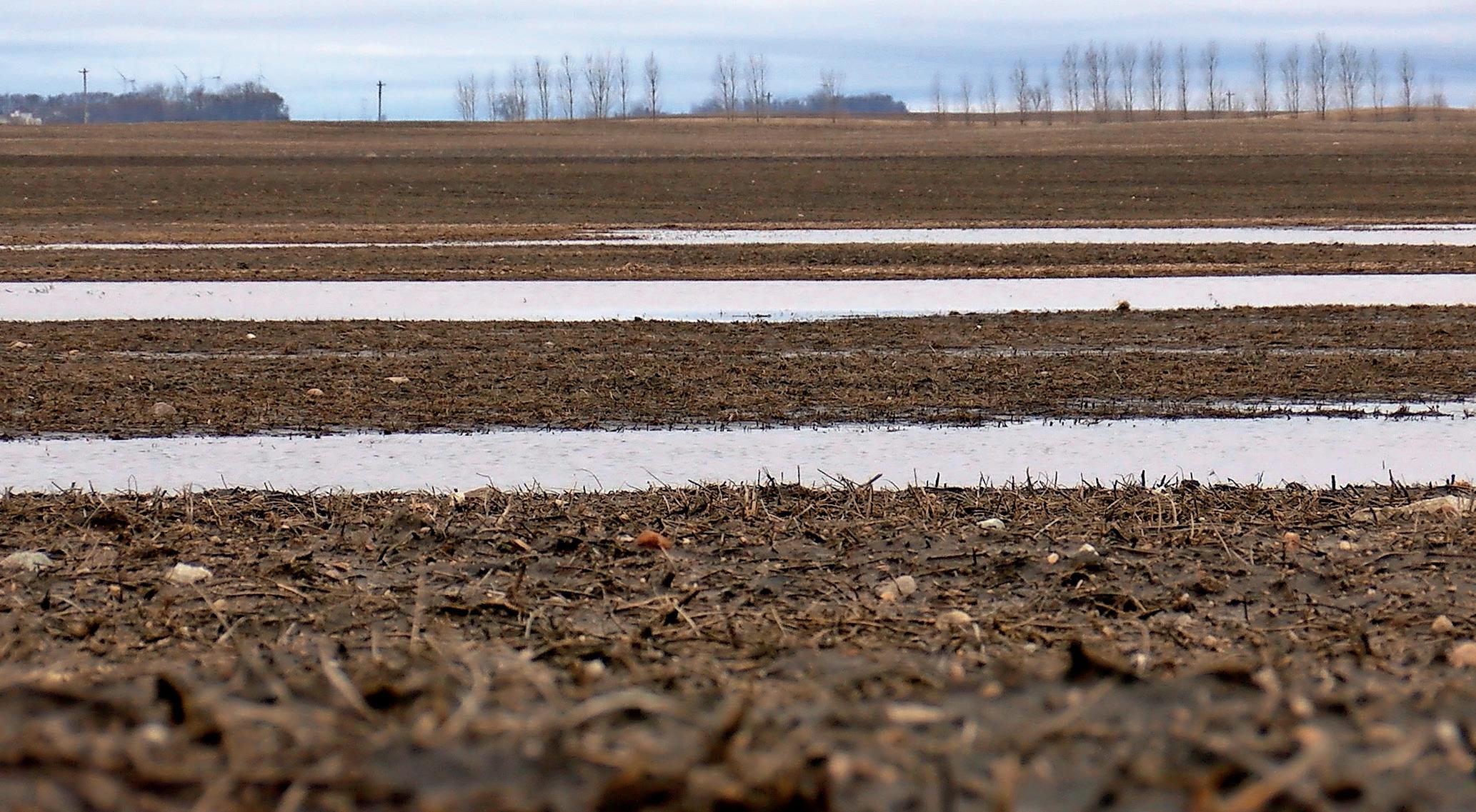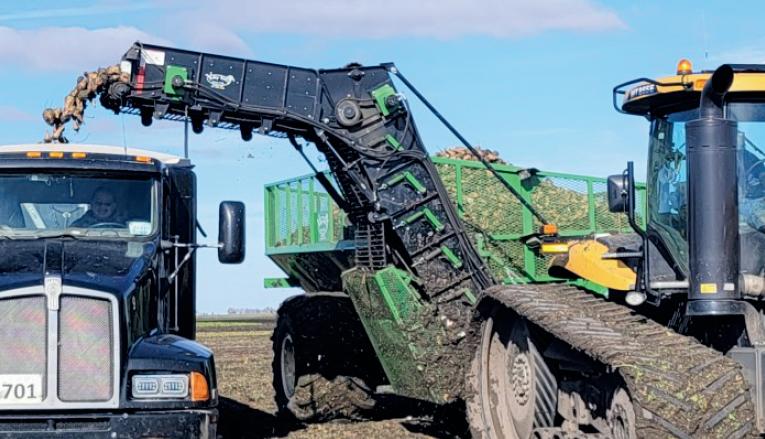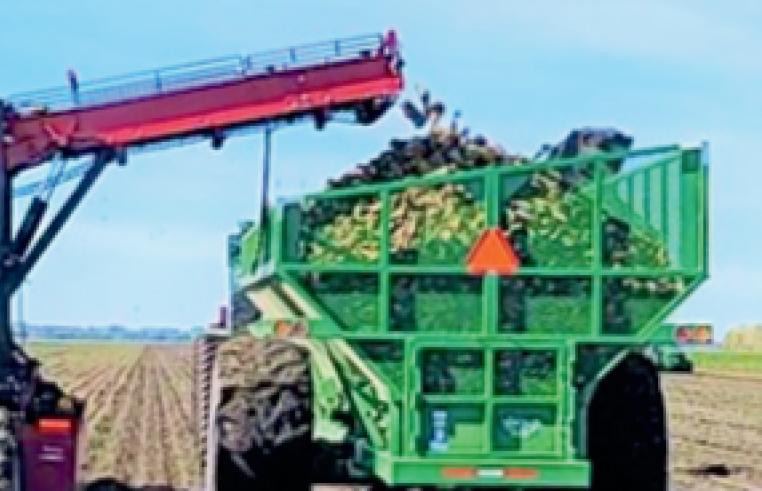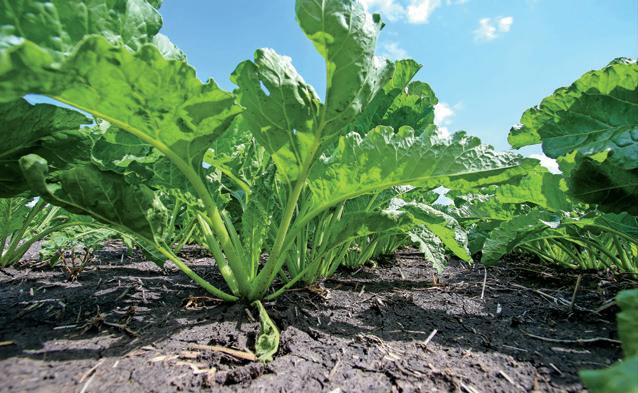
3 minute read
PLAINS AND MICHIGAN
from Sugarbeet May 2022
by agweek
WHILE WESTERN U.S. GROWERS MAKE GOOD PROGRESS
BY ANN BAILEY
In the southern Red River Valley at MinnDak Farmers Cooperative in Wahpeton, North Dakota, rain and snow throughout April had pushed sugarbeet planting off for several more days, Mike Metzger, vice president of agriculture and research, said on May 2.
“We don’t have an acre in the ground,” he said. “It’s wet and cold.”
Total sugarbeet acreage at the cooperative this year is predicted to be 101,000.
The only time in the last decade that no sugarbeets were planted in April was in 2013, Metgzer said.
The forecast for the middle and end of the first week of May 2022 was for drier, warmer conditions, so he hoped that some farmers would be able to get into the field by the weekend.
“But who knows?” Metgzer said. ”As soon as we think the sun is going to shine, there’s another cloud.”
Father south, April snows and rains also delayed sugarbeet planting at Southern Minnesota Beet Sugar Cooperative in Renville, Minnesota, Besides being wet, soils also, generally, have remained cold.
Farmers planted about 1,500 acres rain, ranging from two-tenths of an inch to an inch, fell over the weekend of April 30, 2022, said Todd Geselus, the cooperative’s vice president of agriculture.
There’s still enough time to plant before concerns about being too late are raised, though, he said.

Wet soils or inundated fields are one issue keeping farmers from planting in North Dakota and other parts of the Midwest, while unusually cold soil temperatures also are a problem. Trevor Peterson / Agweek

“We’re getting a little later than normal, but not egregious by any stretch,” Geselius said. “We’ve planted until the end of May before.”
Like at the other cooperatives, farmers who grow sugarbeets for American Crystal Sugar Co., based in Moorhead, Minnesota, still were waiting in early May until soils dried and warmed so they could get in the field.
“We’d rather be wrapping up planting right now or done,” said Joe Hastings, general agronomist. However, during the past decade there have been several years — 2009, 2011, 2013 and 2014 — in which planting was delayed. The cooperative’s latest plant date, on average, during the past decade was 2014 when farmers started seeding on May 21.
When soils do start to dry, farmers will need to exercise patience to avoid “mudding” in the sugarbeets, which may result in replanting and further delay the growing season, Hastings said.

Barring additional rain, fields of farmers in the southern Red River Valley who grow sugarbeets for American Crystal Sugar
“We’re about 95% planted, coming down the homestretch,” said Brad Griff, Snake River Sugarbeet Growers Association executive director, said on May 3. The total acreage of farmers who are members of the association will be about 180,000, he said.
Like most years, some Snake River Sugarbeet Growers Association farmers will have to replant acres, he said. Replanting over the years has varied from about one-third of the total acreage to only a percent or two.
“From year to year, you never know what weather conditions you’re dealing with in the spring. It ping pongs back and forth, and can affect the first crop, Griff said. “It’s pretty typical for some growers to come back and replant some acres due to the frost or some cold weather. Sometimes it just doesn’t get the weather it needs.”
CONTINUED FROM
PAGE collaborated with NDSU researchers Laura Overstreet and Amitva Chatterjee on projects.
Cattanach is best known in the Minnesota, North Dakota and eastern Montana sugarbeet industry for organizing and operating grower planter test stand clinics across the three states. He plans to retire in April.
Bloomquist’s career in agriculture was launched in 1990 when he was hired as an agriculturalist at Southern Minnesota Beet Sugar Cooperative in Renville, Minnesota. In 2008, he accepted a position at the cooperative as a production agronomist. As production agronomist, Bloomquist was responsible for a variety of agronomy projects, including Southern Minnesota Beet Sugar Cooperative official variety trials. Bloomquist was named research director at the Renville cooperative and at Spreckels Sugar in Brawley, California, in 2015.
Bloomquist’s collaboration with Emma Burt, MinnDak Growers
Cooperative research agronomist, and Tom Peters, NDSU Extension sugarbeet agronomist, helped secure an emergency exemption for Ultra Blazer. The exemption allowed farmers to use the post-emergence herbicide to control glysophosatetolerant broadleaf weeds.
Co. may be dry enough to plant the week of May 9, he estimated. Planting further north will proceed as those fields dry.
In Michigan, farmers who grow sugarbeets for Michigan Sugar Co. were about 20% finished with planting their total of slightly less than 150,0000 acres as of May 2, 2022, said James Ruhlman, Michigan Sugar Co. executive vice president.


Sugarbeet fields in Michigan, like in North Dakota and Minnesota, needed warmer temperatures and drier weather to improve soil conditions
This planting season is one of the latest in recent history, Ruhlman said. In 2021, about 80% of the company’s sugarbeets were planted by the end of April.
Although ideally the company would like to have half of its crop in the ground by mid-April, there’s still potential for good sugarbeet production if it is planted by early May, he said.
While planting in the northern Plains and Michigan was delayed by too much moisture, favorable weather conditions in










